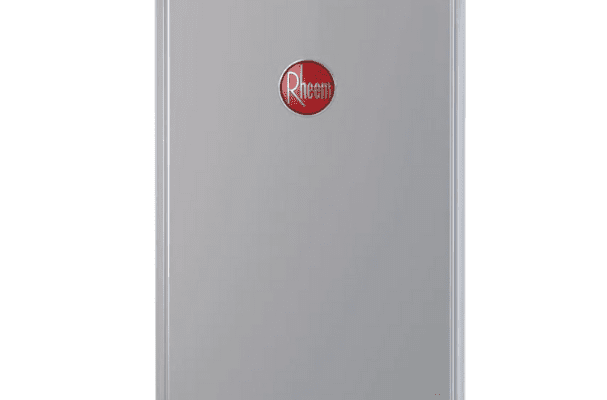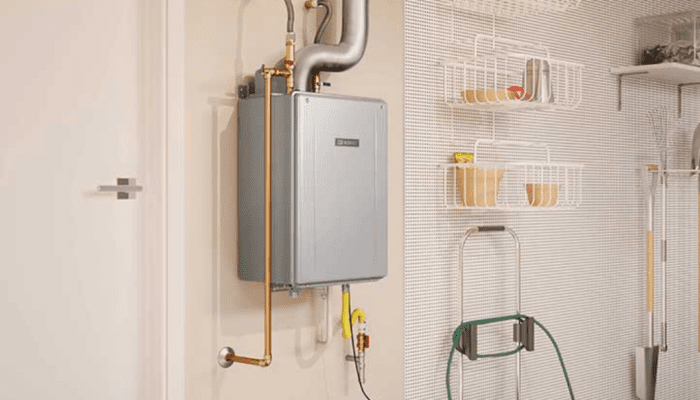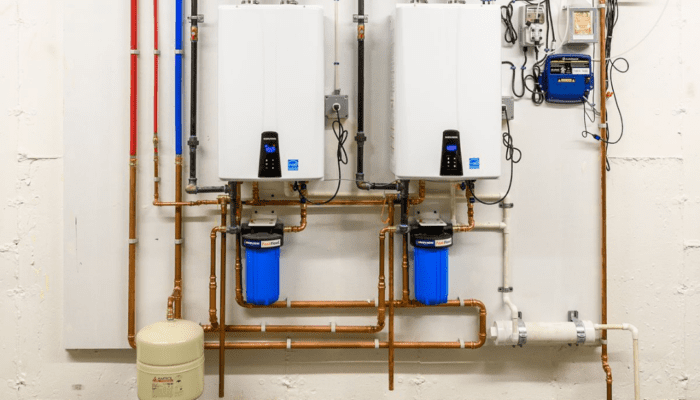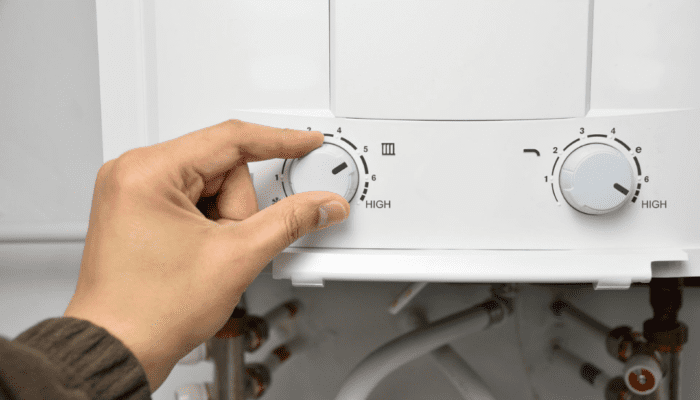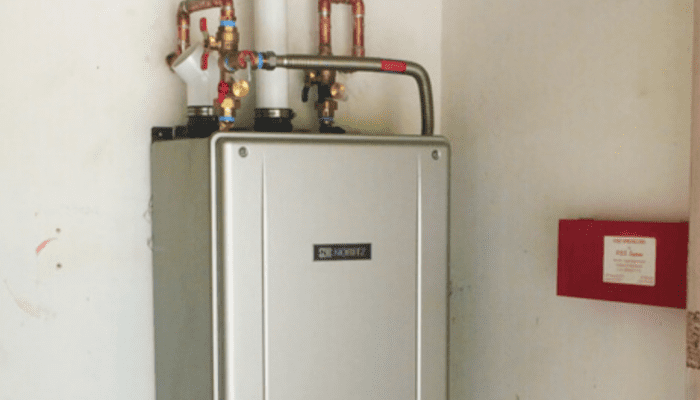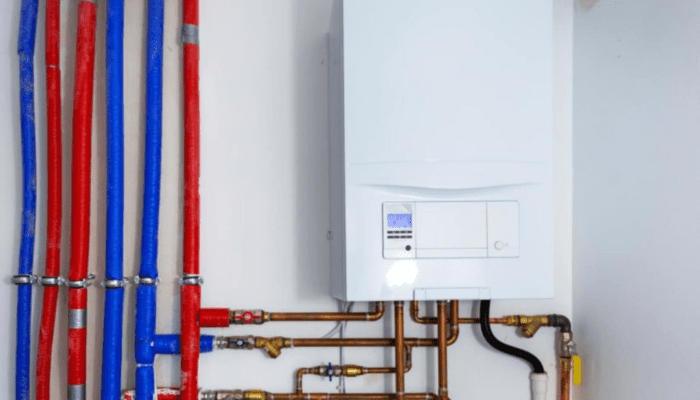It’s a tankless job but somebody’s gotta do it.
All dad jokes aside, installing a tankless water heater is an important task that requires careful attention. To make it as easy and painless as possible, we’ve listed step-by-step instructions below — for both gas and electric units.
Note: Replacing a tankless water heater is a complex task that requires high-level technical skills. So if you don’t feel fully prepared with your plumbing and electrical skills, it’s best to hire a licensed professional — in some locations, this is required. And make sure to follow local electrical and plumbing codes for installing and sourcing parts.
Reliant Plumbing installs tankless water heaters in the Austin and San Antonio areas. Contact our office to see if we service your area. We also service Westlake, Bastrop, Leander, Cedar Park, and many more.
How to Install a Gas Tankless Water Heater
We understand that installing or replacing tankless water heaters can be very costly. It’s possible to install your own unit, but you should only do this if you are very familiar with working with gas lines, water lines, and electrical. If your tankless water heater is installed improperly, you could be left with extreme damage. Improper gas lines can result in explosions, improper gas venting can result in dangerous carbon dioxide leaking into your home, and poorly installed water lines can leave you with harmful water damage.
If you are thinking of a DIY install, it’s important to know the details of your insurance. Some insurance providers will not cover damage to your home unless your tankless water heater was installed by a licensed professional.
If you are confident in your abilities and have double checked with your insurance, the steps below will walk you through how to install your unit.
Step 1
Read the Product Manual Thoroughly
Some manufacturers will void the warranty if their systems aren’t installed by licensed contractors.
Step 2
Pull Permits
Make sure you pull any required state or city permits for installing or replacing a water heater.
Step 3
Be Sure You Have the Right Water Pressure
If incoming water pressure is above 80 psi, you’ll need to install a pressure reducing valve upstream of the new water heater. If you need to install one, you should do that when installing the cold and hot water connections (see “Establish the cold and hot water connections” section below).
Step 4
Choose a Location for Your Tankless Gas Water Heater
- Check your local building code to confirm where you can install your water heater within your home.
- These tankless gas units need to vent directly to the outside through a pipe, not through a chimney. It’s necessary to find a spot that will let the unit vent outside easily, while following local code for vent location.
- Read the manufacturer’s installation instructions carefully to make sure you have enough clearance around the unit.
- Avoid areas where:
- Freezing temps can affect the unit.
- Any type of liquid could regularly splash on the unit.
- There’s a lot of humidity and moisture.
Step 5
Measure the Install Space
Carefully measure the space where you want to place the water heater, so you purchase the right-sized unit.
Step 6
Verify or Upgrade your Gas Line
- Tankless gas water heaters use more gas than tank style ones. So, first determine whether or not your current gas line will suffice.
- If your current gas line won’t cut it, you’ll need to get a licensed contractor to install a newer, bigger gas pipe.
Step 7
Remove Your Old Water Heater
- Turn off the water supply to the unit.
- If there’s no shut off valve before the heater, turn off your main water supply.
- Shut off any power and gas supply valves feeding the heater.
- Drain the unit.
- For hot water, use a hose rated to withstand heat. Open a hot water faucet to release pressure in the system. Let it fully drain.
- Disconnect the water heater from the gas and water lines.
- Dispose of your old water heater properly.
- Contact your local recycling and/or sanitation departments for information on how to properly get rid of it.
Step 8
Mount the Unit
- Create a mounting box that will securely support the unit, and mount it about four inches out from the wall. Use proper anchors for the foundation wall.
- Follow the manufacturer’s directions to securely mount the unit to the box.
Step 9
Install the Gas Line
- Unless you have strong experience with gas pipe connections, hire a licensed contractor.
- If your current gas line is the appropriate size and you can connect to the existing tee, use a threaded black iron pipe to continue the gas line to the unit location. If you’re removing the down pipe for the old unit, remember to turn off the main gas line beforehand.
- After you make sure the gas line runs to the proper place, install a tee, sediment trap, and gas shut-off valve. Follow the manufacturer’s instructions to connect the shutoff valve and sediment trap to the heater.
- Run a new gas supply line from the tee to a spot where it can easily attach to the new unit’s gas line. You can use a black pipe or flexible gas supply line.
- Use two wrenches to assemble the connections towards the heater, starting at the tee. Use thread sealant designed for gas lines when making gas pipe connections.
- After you finish making all the gas line connections, test the line. Use a gas pressure test gauge before turning on the gas.
Step 10
Install New Water Lines
- Follow the manufacturer’s directions to connect the water heater valves to the water supply line.
- Use copper pipe to connect new hot and cold water lines to existing water lines.
- Run the lines to the new unit. You may need to cut and solder copper piping to the unit.
- You may need an expansion tank near the cold intake if your water system has an anti-siphon valve or check valve on the supply line. Refer to your owner’s manual for more information.
- Secure the pipe against the wall with bell hangers.
- Install the pressure relief valve. Follow the manufacturer’s directions for installing a purge valve and pressure relief valve.
Step 11
Check for Leaks
- Turn on the water supply and check for leaks.
- Turn on the gas and check for leaks. You may need to bleed the line.
- Then, turn the gas line off until the installation is complete.
Step 12
Install the Exhaust Vent
- Use the manufacturer’s instructions as a guide for venting the unit properly. There’s a good chance that you can vent the water heater directly through your home’s rim joist. Only use pipes that are rated for this type of venting. You’ll need a vent kit, depending on the manufacturer.
- Apply heat-resistant silicone sealant to the vent shaft of the new unit. Then, place a connector on it and secure it with a hose clamp.
- Place a section of stainless steel vent pipe on top.
- Slip on a retaining ring. Secure it by folding over the tabs.
- Slip on an elbow. Point the opening in the direction where the unit will vent to the outside.
- Choose a point on the joist or wall to be the center of the vent hole for venting outside. At the chosen spot, drill a hole from the inside
- Use a vent thimble to outline a circle on the outside wall. Near the top of the circle, bore a 1-inch hole, using a spade bit. Use a reciprocating saw to cut out the vent hole.
- To allow the flange thimble to be flush against the outside wall, remove siding and shingles from around the vent hole.
- Place silicone caulk around the edge of the flange. Then, insert the flange into the vent hole. Use screws to secure it well to the outside wall and seal them with silicone.
- From the inside, install the interior flange.
- Run a section of vent pipe through the flange opening. Secure each section with the tabs.
- From outside, connect a small section of vent pipe and connect the vent hood.
- Put back the shingles and siding you took off earlier.
Step 13
Purge Air from Water Pipes
- To purge air from the water pipes and heater, open a faucet to full “hot.”
- Turn off the faucet.
Step 14
Plug in the Water Heater
Plug in the water heater. It’s that simple.
Step 15
Insulate Hot Water Pipes
Insulate the hot water pipe that comes from the water heater.
Step 16
Turn on the Gas
After installation is complete, turn on the gas. Your water heater should now be functioning!

